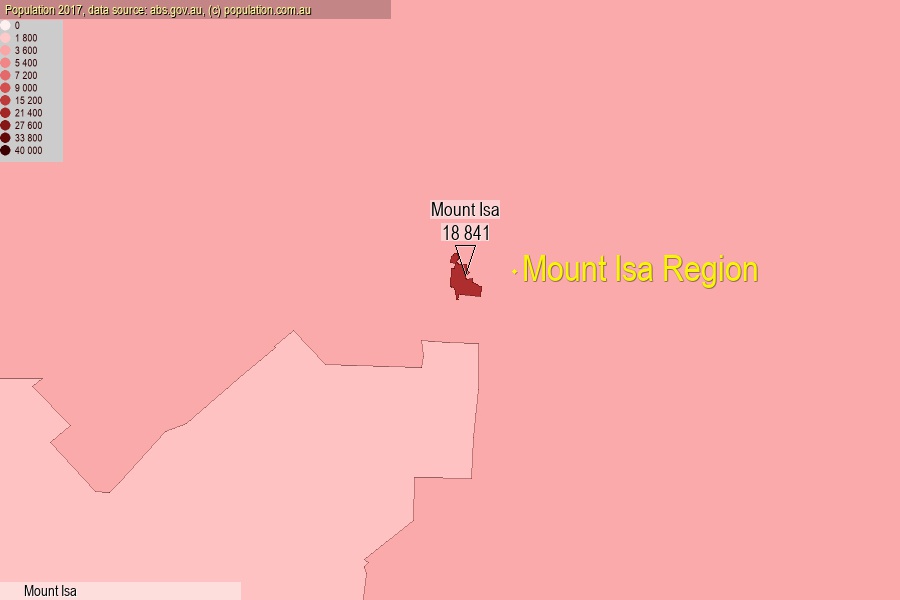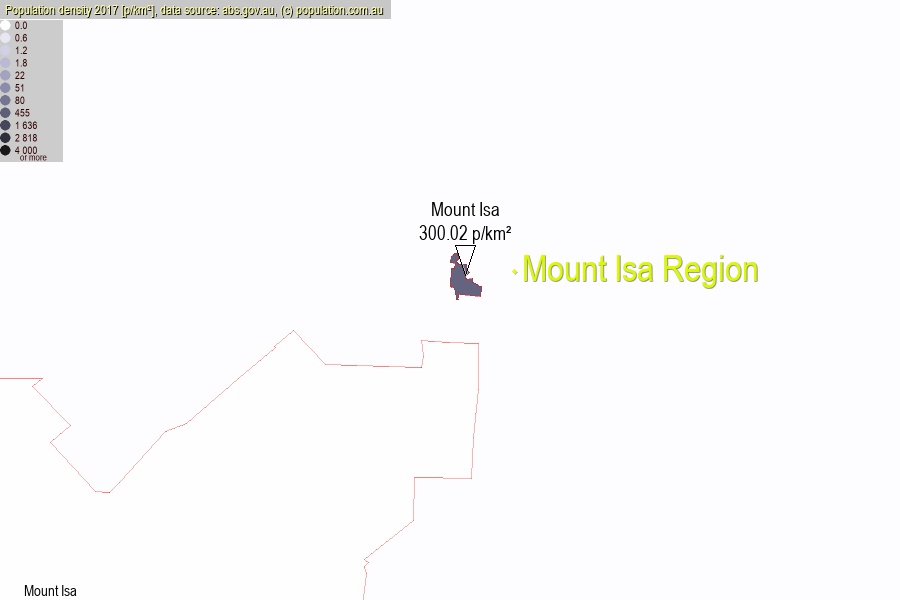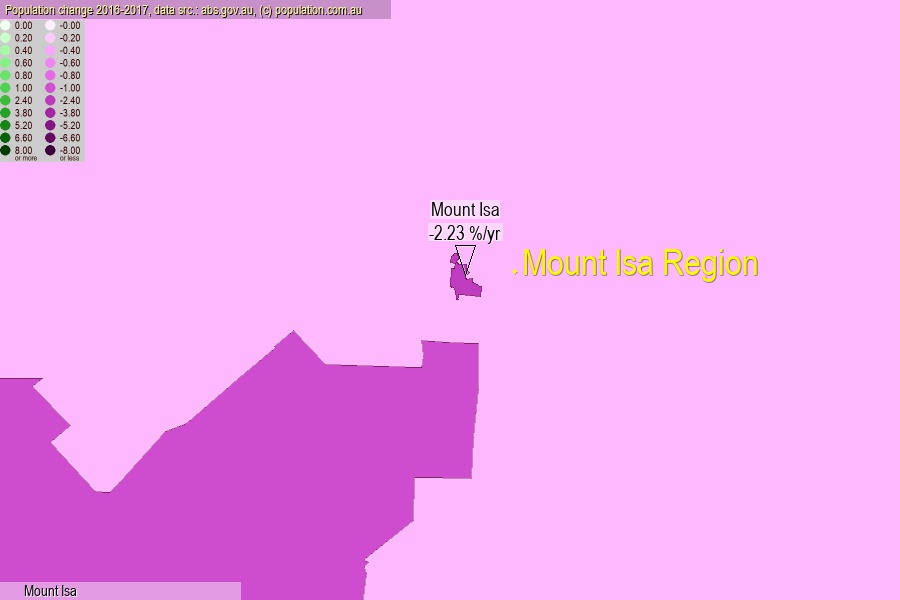 population.com.au
population.com.auLast official estimated population of Mount Isa (as Statistical Area Level 2) was 18 841 people (on 2017-06-30)[2]. This was 0.08% of total Australian population and 0.378% of QLD population. Area of Mount Isa is 62.80 km², in this year population density was 300.02 p/km² . If population growth rate would be same as in period 2016-2017 (-2.23%/yr), Mount Isa population in 2025 would be 15 729. [0]



Click to enlarge. Mount Isa is located in the center of the images.
Population [people], population density [p./km²] and population change [%/year] [2]
View borders » (new window) [4]
[1991-1992] -1.24 %/Yr.
[1992-1993] -1.98 %/Yr.
[1993-1994] -2.65 %/Yr.
[1994-1995] -3.23 %/Yr.
[1995-1996] -1.41 %/Yr.
[1996-1997] -1.35 %/Yr.
[1997-1998] -1.23 %/Yr.
[1998-1999] -1.66 %/Yr.
[1999-2000] -1.18 %/Yr.
[2000-2001] -0.37 %/Yr.
[2001-2002] -2.55 %/Yr.
[2002-2003] -1.12 %/Yr.
[2003-2004] -0.40 %/Yr.
[2004-2005] +1.50 %/Yr.
[2005-2006] +0.83 %/Yr.
[2006-2007] +1.58 %/Yr.
[2007-2008] +3.24 %/Yr.
[2008-2009] +0.96 %/Yr.
[2009-2010] +0.98 %/Yr.
[2010-2011] +1.06 %/Yr.
[2011-2012] -0.32 %/Yr.
[2012-2013] -0.35 %/Yr.
[2013-2014] -2.31 %/Yr.
[2014-2015] -2.91 %/Yr.
[2015-2016] -4.49 %/Yr.
[2016-2017] -2.23 %/Yr.
[0] Calculated with linear interpolation from officially estimated population
[1] Read more about SA2 and Australian Statistical Geography Standard (ASGS) on abs.gov.au
[2] Population data from Australian Bureau of Statistics (Population and density: 2017; change: 2016-2017)
[3] Digital Boundaries: Australian Statistical Geography Standard (ASGS) 2016.
[4] Border coordinates are simplifyed using Ramer-Douglas-Peucker algorithm.